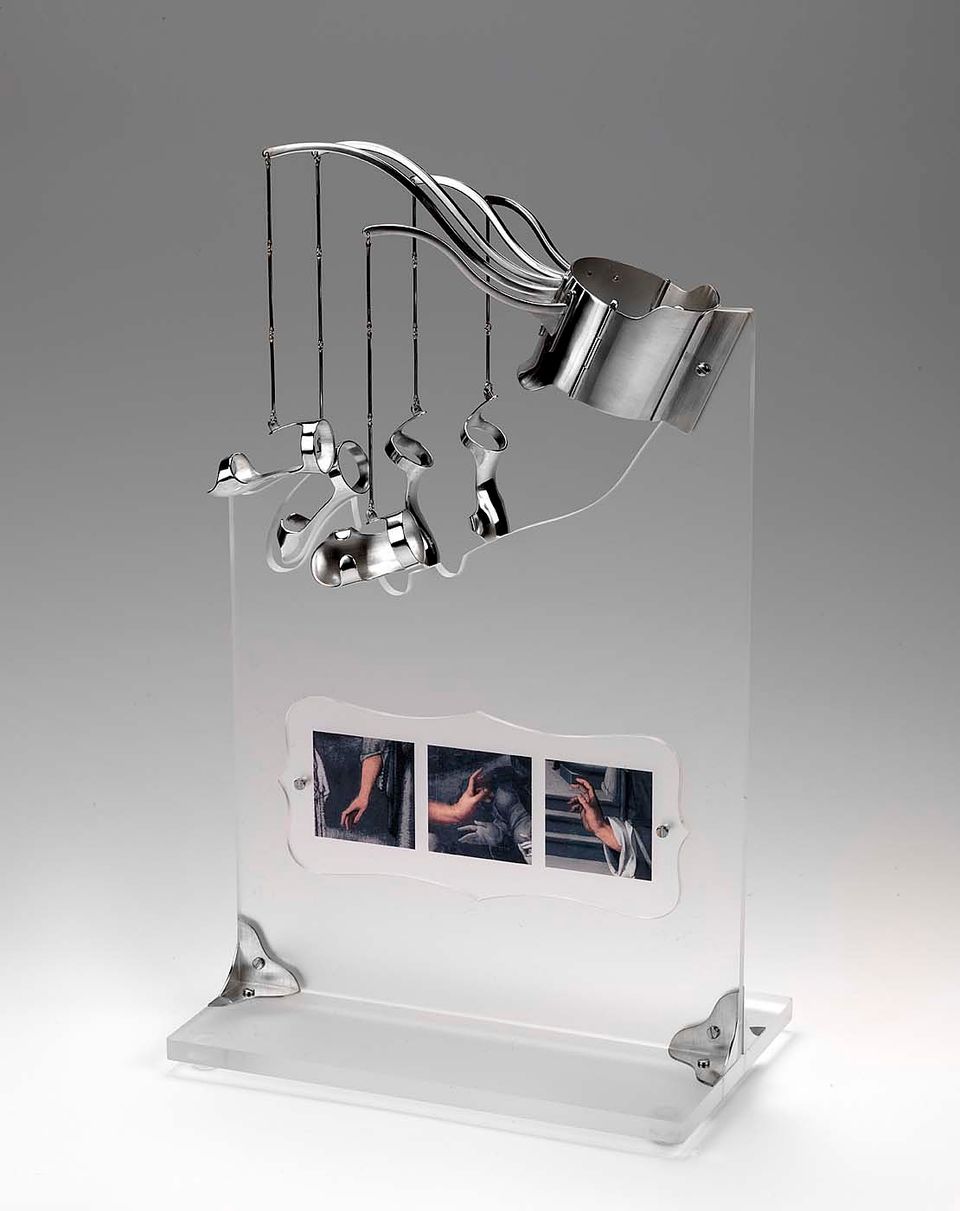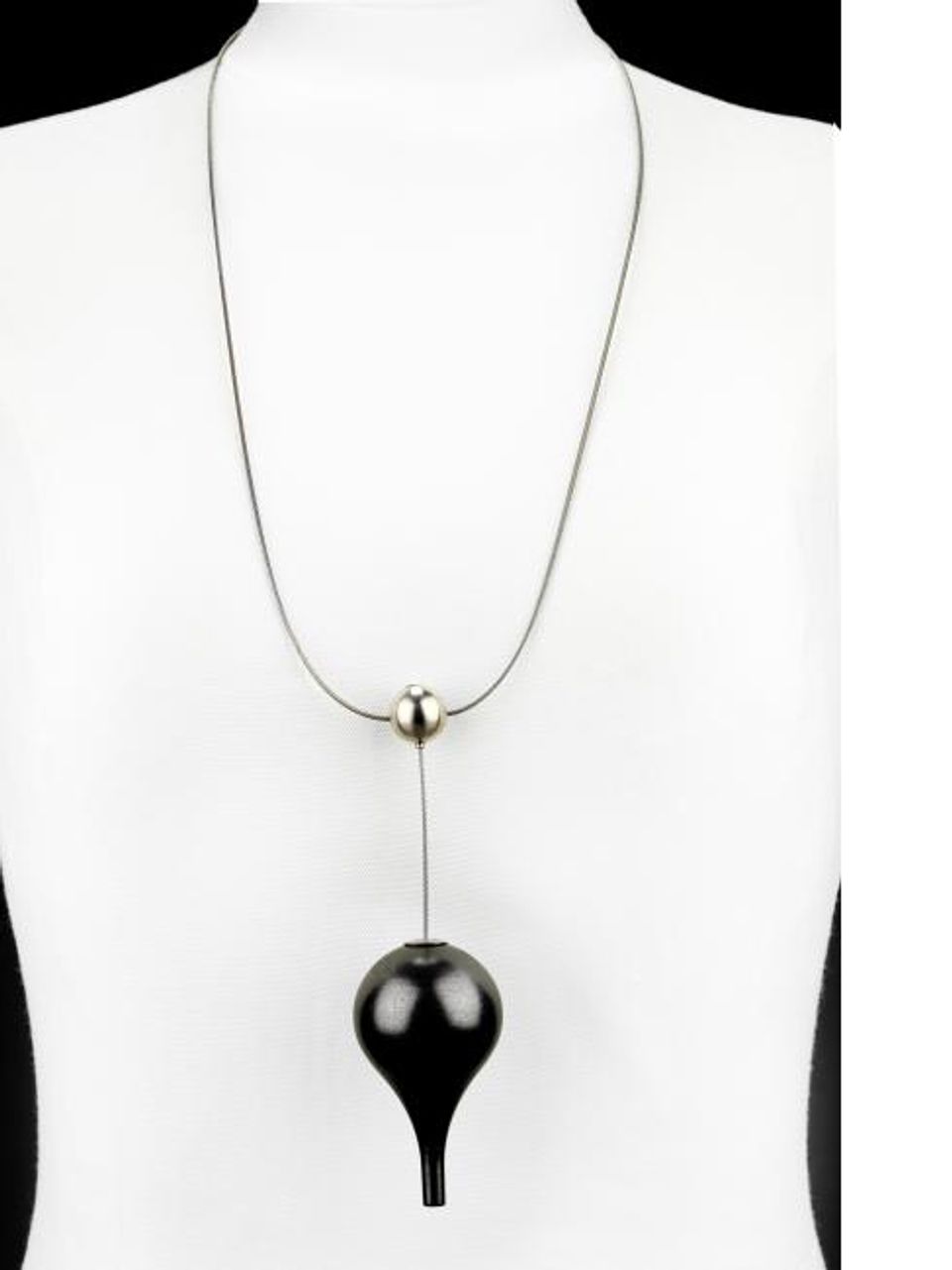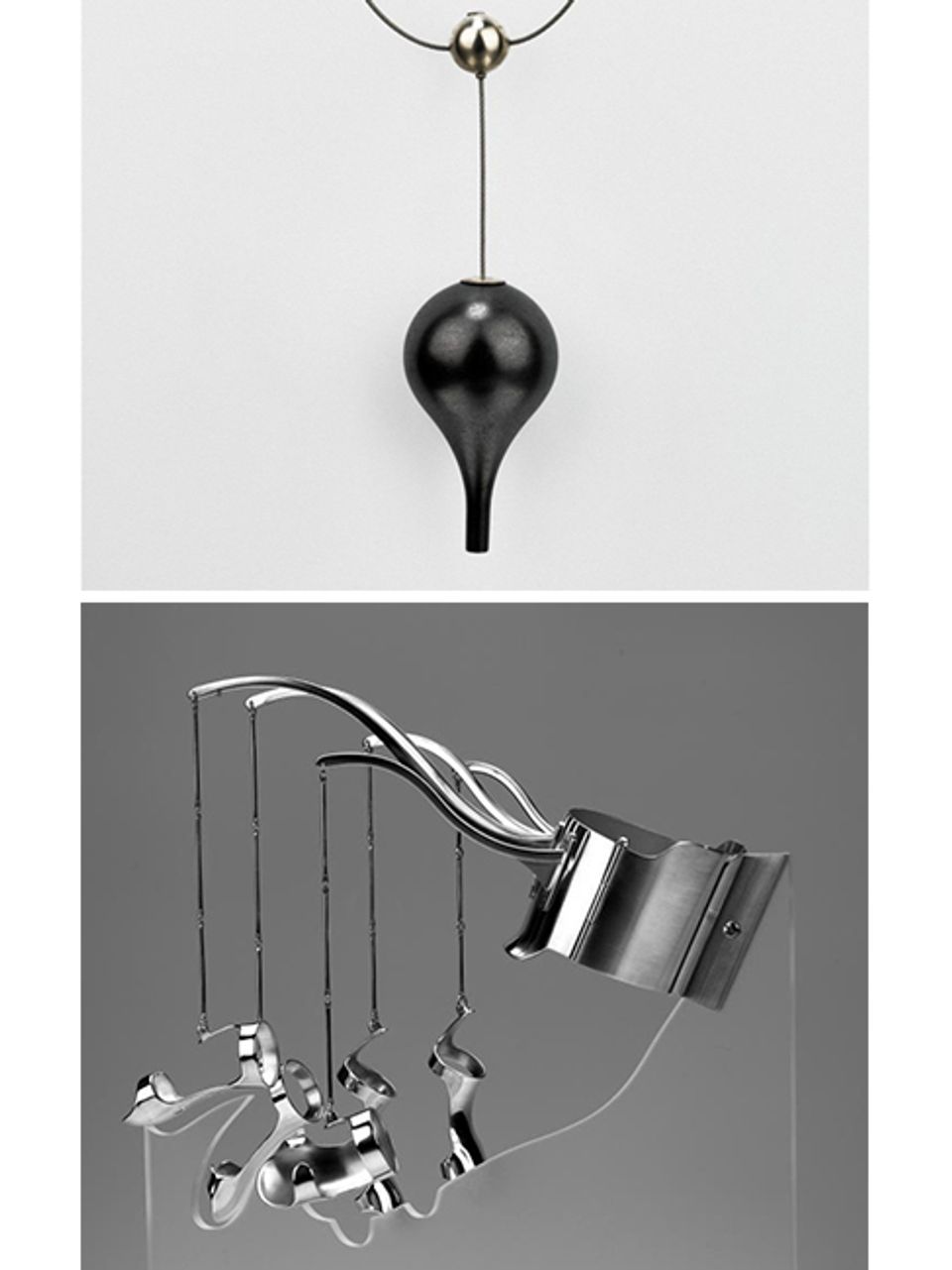
Joan Parcher, Graphite Pendulum-Pendant, 1994, graphite, sterling silver, and stainless steel
Jennifer Crupi, Ornamental Hands: Figure One, 2010, sterling silver, acrylic, and inkjet print on polycarbonate film
Essential Questions
- What does it mean to make connections?
- What kinds of connections can be made?
- What is the process of connection-making?
- How can making connections deepen our understanding of issues, events, and people?
Arc of Learning
(90 minutes)
- Introduction
- Identifying Personal Connections to Jewelry
- Looking at Artwork 1
- Optional: Metacognitive Break
- Another Look at Artwork 1
- Looking at Artwork 2
- Optional: Metacognitive Break
- Another Look at Artwork 2
- Connecting Artworks 1 and 2
- Optional: Metacognitive Break
- A Little About the Artworks Reflection
Artwork 1: Look at “Ornamental Hands”
Students begin the unit with a set of experiences that explore connection-making as a learning tool. Beginning first with their own personal connections and then examining an unfamiliar object in search of connections, they begin to discern how connection-making can help deepen our understanding of objects, issues, or even people.
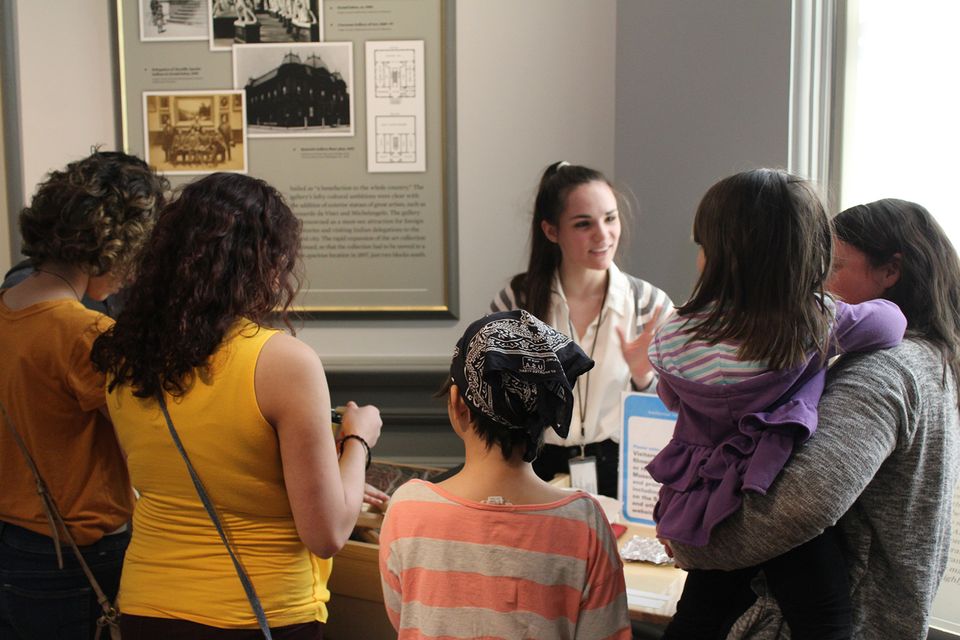
Teaching Moves
Students speculate about the nature of connection-making based on their own experiences, then extend their thinking to the first artwork. In considering the artwork as a system of parts, they also consider how the artwork might function when worn. It is important to note that craft objects are traditionally designed to accommodate the shape, movements, or needs of the human body.
Artwork 2: Look at Graphite “Pendulum Pendant”
This set of learning experiences builds on the previous by expanding students’ scope to consider a wider array of connection types. For example, by using a thinking pattern that encourages students to use descriptive language, they explore the connections amongst parts of speech while deepening their analysis.

Teaching Moves
Using a new thinking pattern (Nouns-Adjectives-Verbs), students examine a second artwork and consider how this piece of jewelry acts upon the wearer. It is important that the students understand the meaning of each of the words in the title of the artwork:
- Graphite: a soft black lustrous form of carbon that occurs as a mineral in some rocks. It is soft and easily wears away. It is used to make lead pencils.
- Pendulum: a weight hung from a fixed point so that it can swing freely backward and forward under the action of gravity and commonly used to regulate movements (as of clockwork)
- Pendant: a piece of jewelry that hangs from a chain worn around the neck
Connect the Artworks
In many ways, this is the most critical learning experience of the unit. Connecting two items often cuts past the differences and focuses on the commonalities, which are the defining features, and help us arrive at the conceptual understanding. “Conceptual understandings” go beyond isolated facts to the deeper organizing principles, allowing for transfer to new contexts.
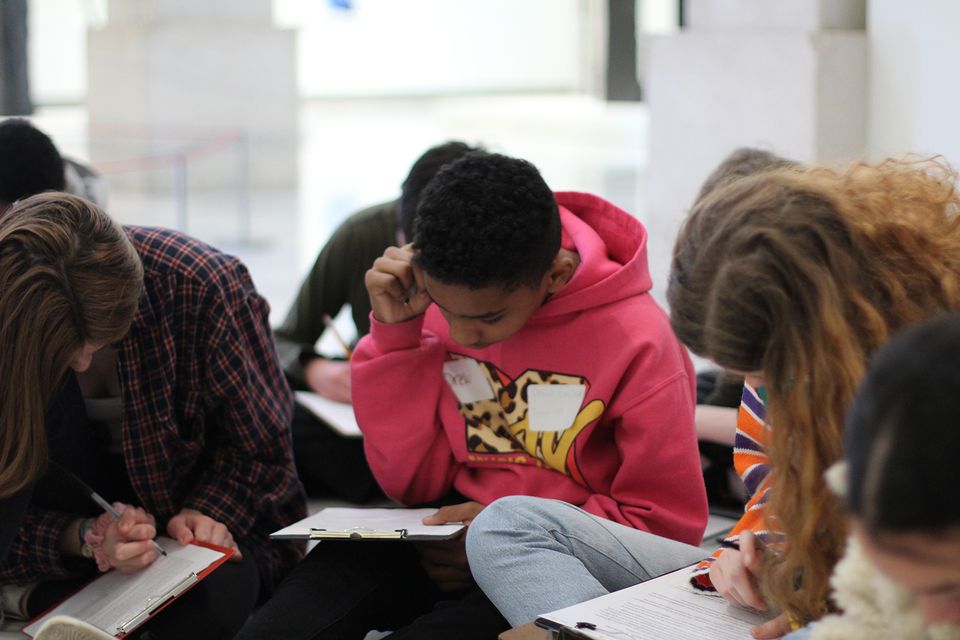
Teaching Moves
By connecting the two artworks from previous steps, students consider how making their own connections extends their understanding of the artworks and, in this case, jewelry. Having read a short text about the artworks, students reflect upon how making connections might deepen their understanding in their lives and their studies.















